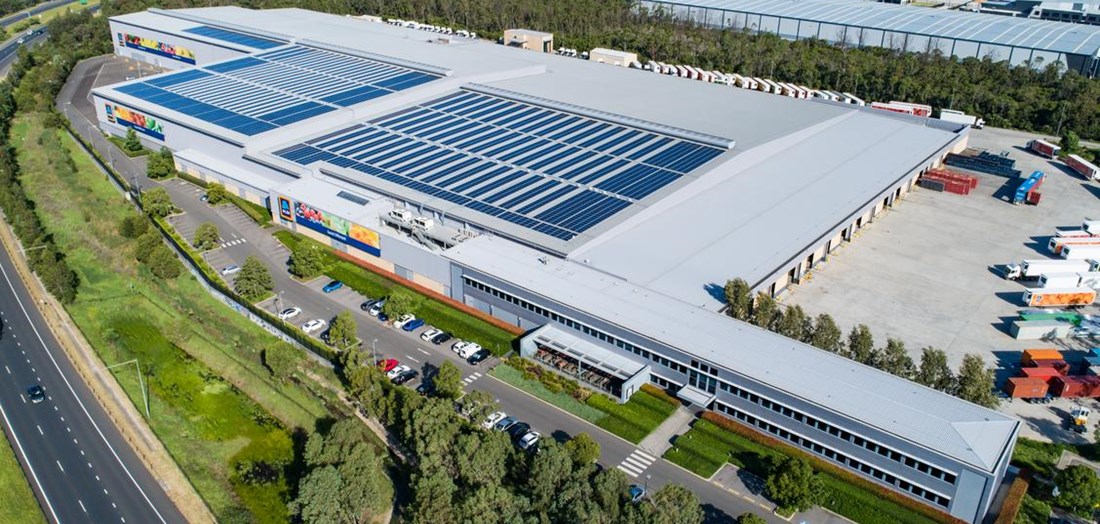Charter Hall’s $5.5 billion Prime Industrial Fund (CPIF) has landed a $50 million equity investment from the Clean Energy Finance Corporation (CEFC), which will help implement innovative sustainability solutions across the fund’s industrial and logistics assets. The investment announced on Thursday represents the CEFC’s first foray into the industrial property sector that holds great potential for sustainability improvements.
“Australia has about 35 million square metres of industrial roof space – a largely untapped resource for energy efficiency improvements, solar PV and batteries that offers significant potential to provide clean energy as well as grid services,” CEFC CEO Ian Learmonth said. “With long-term industrial tenants looking for more sustainable property to help meet their ESG targets, the industrial property sector provides important opportunities to further decarbonise the economy.”
The CEFC hopes that working with one of industry leaders, like Charter Hall, will help transform the industrial property sector as it drives sustainability measures across the fund’s extensive portfolio of assets. The $5.5 billion CPIF is one of Australia’s largest industrial and logistics funds, with 75 assets across Australia, including warehouses, industrial estates and distribution centers.
“This investment will also lead to the construction of new assets that make use of the latest in sustainable design and materials, potentially driving uptake of materials identified in the Federal Government’s Technology Investment Roadmap such as green steel, aluminium and cement, and delivering long term benefits to Australia’s emissions profile,” Learmonth said.
Industrial PV
The CPIF will consider several sustainability initiatives across its portfolio of assets. First, it will look at optimized solutions in the use of solar PV across the 2 million sqm of roof space in its portfolio, as well its potential to be converted into a renewable energy resource to supply clean energy and grid services. The role of embedded networks and batteries will also be considered.
In addition, it will investigate opportunities to deliver carbon-neutral developments whilst also targeting a 5 Star Green Star Design and As Built rating for its $900 million strong development pipeline of projects near major infrastructure roads, rail and ports, work with tenants to improve their sustainability outcomes and reduce energy consumption, and consider waste diversion strategies.
“Charter Hall is committed to continuous improvement in ESG performance across our portfolio. The CEFC investment is an endorsement of our plans to improve the operational performance of our buildings and deliver to our tenant customers a consistent high performing product,” Charter Hall Chief Investment Officer Sean McMahon said.
In its recently released annual report, the CEFC has signaled its intention to move beyond solar and wind investment over the coming year and put its capital to work in the nascent green hydrogen industry and grid projects. Since its inception, the bulk of the green bank’s funding has gone to large-scale investments helping more than 3 GW of solar and wind get off the ground. Now, the CEFC says it is looking to expand into areas that can further assist the country’s energy transition with a focus on catalyzing finance into Renewable Energy Zones, grid upgrades, the integration of significant storage and renewables and the potential for grid security services.
This content is protected by copyright and may not be reused. If you want to cooperate with us and would like to reuse some of our content, please contact: editors@pv-magazine.com.









By submitting this form you agree to pv magazine using your data for the purposes of publishing your comment.
Your personal data will only be disclosed or otherwise transmitted to third parties for the purposes of spam filtering or if this is necessary for technical maintenance of the website. Any other transfer to third parties will not take place unless this is justified on the basis of applicable data protection regulations or if pv magazine is legally obliged to do so.
You may revoke this consent at any time with effect for the future, in which case your personal data will be deleted immediately. Otherwise, your data will be deleted if pv magazine has processed your request or the purpose of data storage is fulfilled.
Further information on data privacy can be found in our Data Protection Policy.